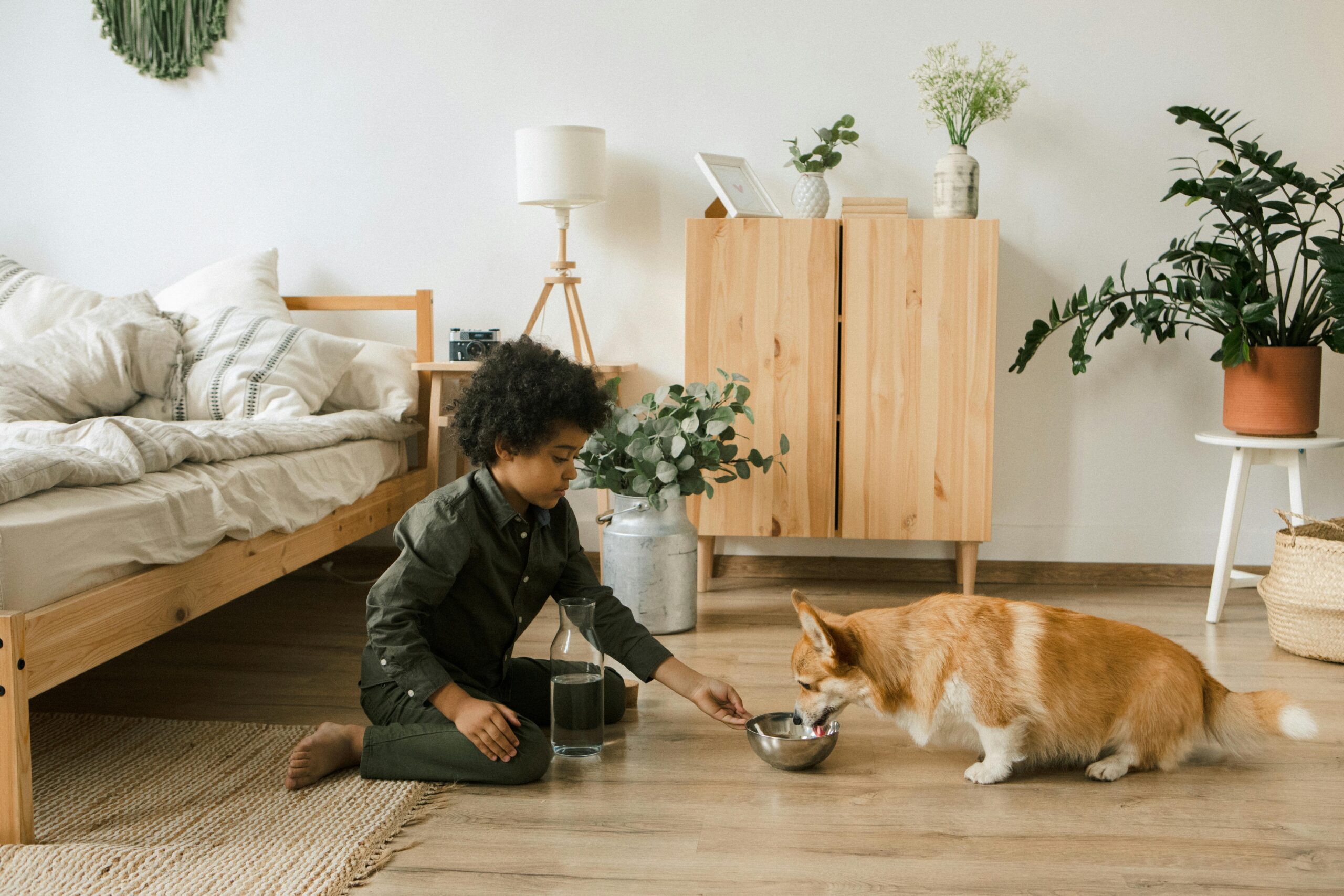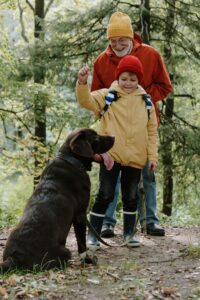Families with both children and dogs often dream of peaceful, joyful interactions between the two. But without the right structure, it can feel more like refereeing a constant match. As a professional dog trainer, I’ve worked with countless families navigating this exact dynamic. The truth is, kids and dogs can absolutely thrive together if you build the right foundation.
In this post, I’ll share practical, real-world tips to help your family raise a well-behaved dog while teaching your children how to be respectful and safe companions.
Why Family Dynamics Matter in Dog Training
When you’re raising a dog in a household with children, your training strategy needs to consider more than just commands. You’re balancing energy levels, unpredictability, and competing priorities. Your dog might behave perfectly with adults but act out around your kids due to excitement, confusion, or even fear.
Understanding this dynamic helps us create a tailored plan that works for the entire household, not just the dog.
Start With Structure: Rules and Routines
Dogs and kids both thrive with clear boundaries. Establishing consistent routines early on can prevent chaos and create calm. Here’s how to start:
- Designate zones: Set dog-free areas (like kids’ bedrooms) and calm zones for your pup to decompress.
- Set routines: Feed, walk, and train your dog on a schedule. Predictability builds trust.
- Teach calm greetings: Excitement can lead to jumping, barking, or nipping. Practice calm introductions daily.
If your dog needs help mastering basic manners, our Basic Obedience Program is designed to create reliable behavior, even in high-energy homes.
Age-Appropriate Involvement for Kids
Involving your kids in the training process builds responsibility and strengthens the bond with your dog. But how much they help should depend on their age.
Toddlers and preschoolers:
- Teach them to respect your dog’s space.
- Show them how to offer treats with an open palm (supervised).
- Create parallel play. Dog in a “place” command while child plays nearby.
Elementary age:
- Practice commands like “sit,” “stay,” and “come” with supervision.
- Involve them in feeding and brushing routines.
- Teach leash manners through fun drills or games.
Tweens and teens:
- Let them take more responsibility with walks and obedience training.
- Challenge them with advanced skills like “place” during distractions.
We dive deeper into managing high-stimulation environments in our post on training your dog to handle crowds and events, which is especially helpful if you plan to bring your dog along to soccer games, barbecues, or birthday parties.
Supervision Is Non-Negotiable
Even the most loving dog can react unpredictably when startled or stressed. And even the most well-meaning child can accidentally provoke a reaction.
Here’s how to supervise safely:
- Never leave babies or toddlers alone with a dog.
- Watch for stress signals, such as yawning, licking lips, or walking away.
- Use gates, crates, or tethers to separate as needed. This gives your dog a safe retreat and your kids a clear boundary.
It’s not about mistrust. It’s about setting everyone up for success.
Create Shared Activities
Building positive associations between your kids and your dog doesn’t have to be complicated. Here are a few engaging ideas:
- Hide and seek (kids hide, dog finds)
- Fetch with a helper (kids toss, dog retrieves)
- Trick training challenges (teach “high five,” “spin,” or “roll over”)
- Backyard obstacle courses
These structured games provide mental stimulation and bonding without letting the energy spiral out of control.
Teach Respect on Both Sides
While dogs need to learn impulse control, children also need to learn boundaries. Teach your kids:
- Not to disturb a sleeping or eating dog.
- Not to pull tails, ears, or fur.
- To speak calmly and avoid screaming near the dog.
- How to invite a dog to interact rather than forcing it.
Encouraging this mutual respect fosters a relationship built on trust. That’s the cornerstone of great training.
Handling Setbacks with Patience
Not every moment will be picture-perfect. Maybe your dog growls at the toddler or your child forgets the rules. Don’t panic. These moments are opportunities for learning, not punishment.
- Revisit training basics if your dog’s behavior regresses.
- Redirect inappropriate child behavior with kindness and clarity.
- Reach out for professional guidance if tension or confusion escalates.
If you’re noticing that your dog is more anxious, hyperactive, or reactive around kids, it may be time for structured help. Our Basic & Advanced Obedience Program offers customized solutions for families just like yours.
Backed by Science: Why This Approach Works
According to the American Veterinary Medical Association, children are the most common victims of dog bites, with the majority of incidents occurring in familiar environments like the home. By training your dog and educating your children on proper interaction, you can reduce the risk of bites and promote a safer, more respectful relationship between them.
Final Thoughts: Train the Family, Not Just the Dog
A well-trained dog is a joy, but a well-synced family is even better. When everyone speaks the same training language and respects boundaries, dogs can flourish in the chaos of family life.
It’s not about perfection. It’s about consistent communication, thoughtful supervision, and creating an environment where both your kids and your dog can thrive.
Ready to make training a family affair? Contact us today to find out how our programs can support your whole pack.


